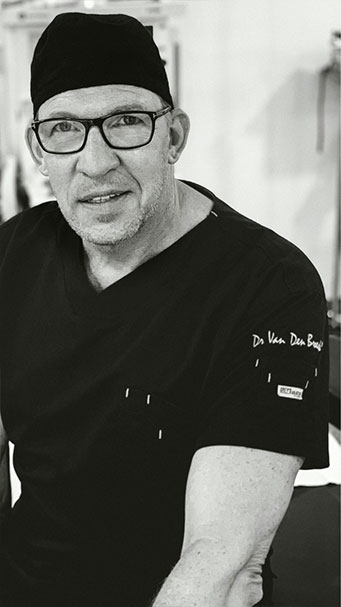For a variety of reasons – pregnancy, weight gain or loss, spontaneous sagging, the presence of scars or stretch marks that are too visible – the tummy and waist can lose their natural harmony. Fortunately, thanks to cosmetic surgery, it is possible to regain an attractive flat stomach and a slim waistline by acting on three levels: the skin, fat and muscles.
Removing excess fat: liposuction
Contrary to popular belief, liposuction is not an operation whose aim is to make the patient lose weight, but to reshape the figure to bring it as close as possible to the natural ovoid (egg-shaped) shape of the pelvis. Liposuction is often indicated after one or more pregnancies, in order to remove the fat that formed naturally around the hips during the pregnancy (necessary for breast-feeding). Most of the time, these fatty deposits are resistant to diet and physical activity. This is why this operation is often performed on younger patients. What’s more, it works best on well-tautened skin.
The principle of this procedure is to remove localised excess fat from the abdomen. To do this, your cosmetic surgeon will make micro-incisions (2 to 5 mm) to slide a cannula under the skin and suck out the subcutaneous fat. The procedure is usually carried out on an outpatient basis, but may require an overnight stay in hospital. Liposuction of the abdomen takes between 1 and 3 hours and the anaesthetic will depend on this timing and the patient’s wishes. Post-operative recovery is straightforward: swelling and bruising occur in most cases and disappear within a month of the operation. Pain is moderate and calmed by simple analgesics.
The scars are very small (less than 8 mm) and located at the umbilicus and at the birth of the pubis. They will be virtually invisible shortly after the operation. At the end of the operation, an abdominal girdle is worn and must be kept on for 4 to 6 weeks, day and night.
The results of liposuction become apparent in the month following the operation and the final result is obtained approximately three months later, in particular due to the gradual nature of skin retraction and the total disappearance of oedema.
Correction of the abdominal wall: abdominoplasty.
If the unsightly appearance of the abdomen is due to stretched skin, a separation of the abdominal muscles (diastasis often caused by consecutive pregnancies and/or significant weight loss), the presence of deep excess fat, or an old, highly visible scar or stretch marks on the abdomen, your plastic surgeon will refer you for an abdominoplasty (or tummy tuck). There are two types of abdominoplasty: mini abdominoplasty and “abdominoplasty with transposition of the umbilicus”.
The principle, type of anaesthetic, length of hospital stay and post-operative course are virtually identical for these two procedures. The difference lies in the indication. The first is indicated in cases of:
o Slight relaxation of the abdomen (skin and/or muscle)
o And/or moderate excess fat
o And/or the skin is damaged by stretch marks or a scar from previous surgery
Only in the area below the navel;
While the second is indicated if :
o Excess skin and fat are important
o The abdominal wall is very distended
o Also if the skin is “damaged”
In the area above and below the navel
The aim of abdominoplasty is to:
o Reduce the thickness of the abdominal wall by liposuction of excess fatty tissue
o Tighten the abdominal muscles if necessary
o Remove excess skin
o Correct any visible scars or stretch marks
The work consists of:
o Remove excess fat using a liposuction technique
o Tighten the abdominal muscles if necessary
o Remove excess skin to tighten it
o Correct any visible scars or stretch marks
To do this, your surgeon will make an incision at the base of the pubis and also around the navel in the case of abdominoplasty with transposition of the umbilicus. The skin will then be removed and the tummy will be completely re-draped (skin and muscles). In the case of abdominoplasty with transposition of the umbilicus, the navel will be repositioned through a hole created at the end of the operation. If the aim is to correct a visible scar or marked stretch marks, your surgeon will “lower” the skin to bikini level.
The procedure lasts 1 to 2 hours for the first and 2 to 3 hours for the second. Both procedures are performed under general anaesthetic and the hospital stay is 3 days. At the end of the operation, an abdominal girdle will be worn for 4 to 6 weeks, day and night. The visible scar will be comparable to that of a caesarean section hidden in the bikini line. The visible scar will be comparable to that of a caesarean section hidden in the bikini line. In the case of abdominoplasty with transposition of the umbilicus, there will also be a small scar in the form of a circumflex accent around the navel, which will disappear very quickly. The mini-abdominoplasty scar will be shorter and thinner than that of abdominoplasty with transposition of the umbilicus.
Post-operative recovery is straightforward. Points of “dimpling” will be visible after the operation but will disappear in the days that follow. Swelling and bruising will appear and will completely disappear within 1 to 3 months, if the support girdle is worn as indicated. Pain will be moderate (a little greater for abdominoplasty with transposition of the umbilicus) and will subside with painkillers. The final result will be visible after 3 months. Social exclusion is 4 to 7 days for the first and 7 to 15 days for the second, depending on the patient’s professional context. Physical activity can be resumed 1 to 1? months after the operation.
Complications from this type of operation are rare if it is carried out by a surgeon who is competent in this field.








